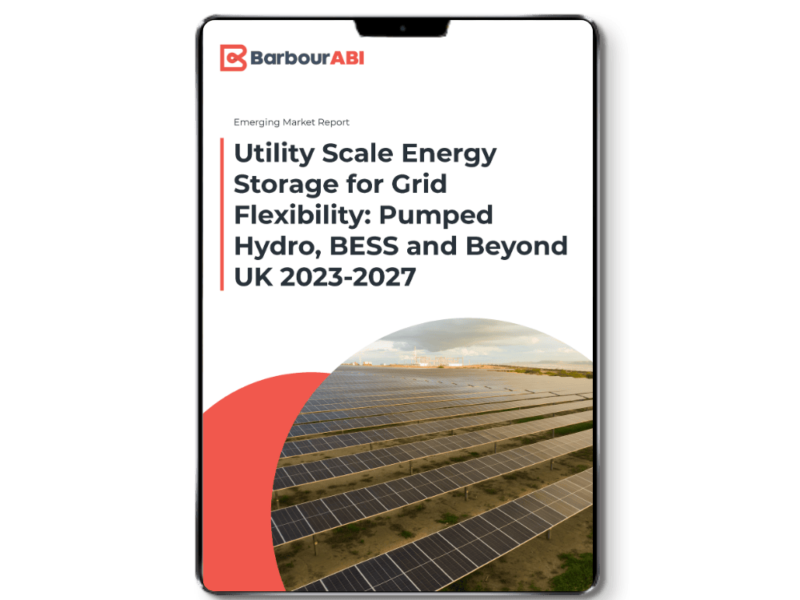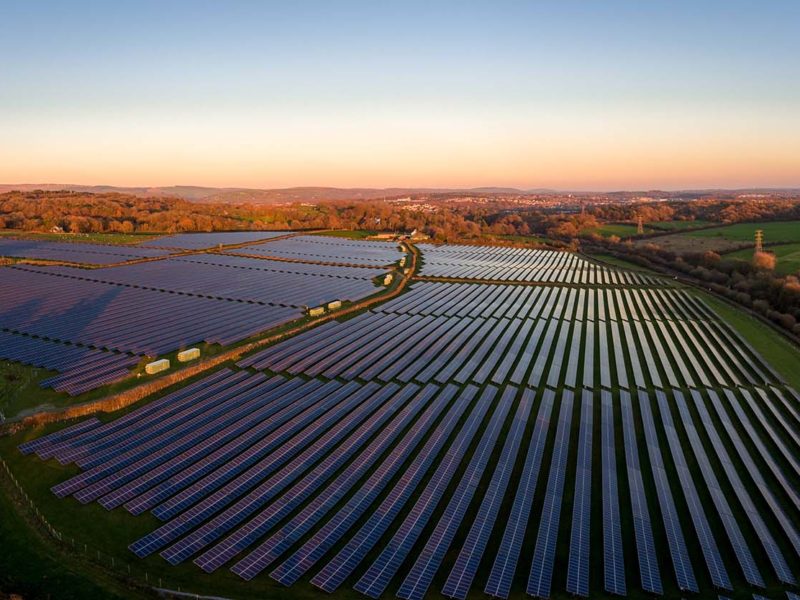UK Utility Scale Energy Storage Market Report – 2023-2027
Available as an Instant Download PDF
The 1st edition of the UK Utility Scale Energy Storage Market Report 2023-2027 provides a detailed evaluation of the current state of the market and prospects. It explores smart grid flexibility as well as pumped hydro, battery energy storage systems (BESS), compressed air energy storage (CAES), and liquid air energy storage (LAES). Providing market analysis, market size and share, market trends, forecasting, major influences and drivers, innovation and sustainability review, this report breaks all topics into granular levels to grant full understanding of the market.
£1,499.00 Exc. VAT
The UK is committed to reducing greenhouse gas emissions, with legally binding targets from the Paris Agreement and its Net Zero by 2050 goal. Emissions have decreased to 50% of 1990 levels due to reduced coal reliance. However, the aging energy infrastructure and delayed solar and wind projects hinder progress.
A queue for grid connection is causing delays for many projects. A change in National Grid’s policy in late 2023 should speed up development. Solar, wind, and energy storage should be prioritized for their cost-effectiveness, energy security, and quick installation. Hinkley Point C and Sizewell C nuclear plants face delays and cost overruns.
To reduce emissions, the UK needs to electrify everything and upgrade its infrastructure. National Grid and other DNOs must build five times more infrastructure in the next seven years. Energy storage, including battery energy storage systems (BESS), is vital for grid stability. BESS has surpassed pumped hydro in capacity and is rapidly growing.
Short-duration storage balances grid frequency and voltage, while long-duration storage enhances grid resilience. Frameworks for long-duration storage projects are lacking. BESS storage duration is improving, with 8-hour projects in development. A range of storage technologies should be prioritized.
Based upon a combination of planning and project data, interviews with key stakeholders and desk research, this report provides an independent and unbiased review of the current position of energy storage market and growth prospects to 2030.
Market Forecasts
Making forecasts for an immature market relying on ever changing government policy is difficult. Despite its immaturity, the UK has one of the most developed energy storage markets in the world. This report covers market forecasting for:
- Forecasts for agreed BESS grid connections to 2030
- Scenario forecasts for BESS (GW)
- Potential for pumped hydro capacity to 2031
Energy Storage Companies and Competitive Landscape
UK energy storage capacity could exceed 20GW by 2027 with optimized planning policies and financial incentives. The competitive landscape includes major energy companies, ESG funds, startups, and independent power producers. Collaboration between developers is possible. Developing energy storage will lead to a greener grid, job creation, and cleaner air, positioning the UK as a global example.
Other topics of research in this area include:
- Major Energy Companies
- Experienced Energy Storage Companies
- Funded Developers
- ESG Funds
- Renewable energy developers
- Other Renewable Developers
- Prospective entrants from overseas
- Independent Power Producers
- Other independent power producers
- Originators
- Other Originators
- Property Companies
- Long Duration Storage
- CAES / LAES
- Pumped Hydro
- BESS Optimisers
- BESS pack Suppliers (Li-ion and Others)
- Li-ion
- Flow Batteries
- Other Batteries
- DNOs
- IDNOs
- Case Studies
- UK Power Networks Smarter Network Storage
- Minety Storage
- Energy Superhub Oxford
- Harmony Energy Pillswood
Regional analysis
A comprehensive review was conducted, encompassing all energy storage projects, both operational/active and those in the planning stages. The assessment included a breakdown of installed capacity, categorized by region. Additionally, there was a specific emphasis on analyzing and further dissecting Battery Energy Storage System (BESS) projects, with an evaluation of prospective energy storage solutions tailored to each region.
The UK Utility Scale Energy Storage Market Report 2023-2027 provides an in-depth PESTLE breakdown to cover all areas of market influences and drivers. See the full breakdown and each section explored below.
Political:
- Recent Government Policy
- UK Energy Security Strategy
- Carbon Capture and Hydrogen
- UK Political Insecurity and Upcoming Manifesto Energy Pledges
- US Inflation Reduction Act
- Reliance on Chinese Production
Economic:
- UK GDP
- UKIB and Net Zero Innovation Portfolio
- Energy Storage Financial Markets
- Contracts for Difference
- Power Purchase Agreements
- Increased funding to upgrade electricity distribution network
- Energy Prices
- Asset Management
- Special Purpose Vehicles
- ESG Funds
Social:
- ESG and the Triple Bottom Line
- Perception of Renewables and Myths
Technological:
- Great Grid Connection
- Electricity Infrastructure
- EV Charging
- DNOs vs IDNOs/ICPs
- Need for Long Duration Storage
- Speed of Development
- Li-ion Battery Cooling Requirements
- Decommissioned Power Stations
Legal:
- UK Environmental Obligations
- Planning
Environmental:
- Scarce Resources
The following elements are explored in the report as innovative and sustainable items within the market and how they’ll reshape the future of the grid in the UK.
- Batteries
- 2nd Life EV Batteries and Recycling
- Advanced batteries
- Flow Batteries
- Abundant Electrode materials
- Thermal Energy Storage
- Sensible Heat Storage (SHS)
- PCM Latent Heat Storage (LHS)
- Renewable Generation
- Solar Power
- Wind Turbine Design
- Morocco-UK Power Project
- Future Grid System
- Smart Grid
- Superconductivity

Paired Report Discount
Save £250 for every two reports you buy
Discount applied in basket
Frequently bought together

Trusted by industry leaders
For more detailed requests speak to our research experts directly
By using this form you agree that your data will be processed and protected in line with our Privacy Policy.
Research you can depend on
Our reports go deeper to give you the insights needed to make your next strategic move.
- Detailed assessment of the market – analysis of the market structure and recent developments within the market.
- Market prospects up to 4 years – market value, opportunities, impact of Covid-19, Brexit etc.
- Detailed information – market size, influences, market factors and key players.
- Analysis by product group – market size, product mix, sector trends etc.






